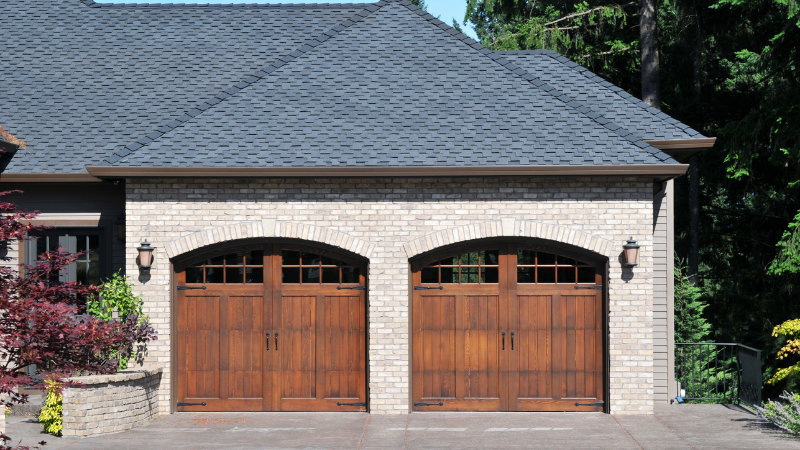Introduction
The Power of Paint in Real Estate
A swash of paint can be a game-changer in real estate, turning a mundane abode into a covetable haven. It’s not just about splashing walls with any hue; it’s an artful strategy to woo buyers and achieve higher selling prices, with minimal investment.
Setting the Stage for Higher Offers
In this chromatic playbook, I’ll unveil six paint colours that are your secret arsenal in the real estate battleground. These aren’t just colours; they’re investment multipliers.
Chic Charcoal: A Modern Marvel
Subtle Sophistication in Living Spaces
Charcoal isn’t just for grills—it’s the epitome of sophistication. Transforming living rooms into luxurious lounges, this chic shade is the choice of those who make statements with class. Among the best room paint colours, charcoal reigns supreme, especially for crafting upscale homes or styling sophisticated condos. Its depth adds dimension, from a calm backdrop in daylight to a captivating presence at night.
Imagine relaxing in a space where walls whisper tales of elegance and mystery. Charcoal does just that, infusing understated sophistication. It doesn’t demand attention; it gracefully steals it, making furniture and artwork come alive.
Pairing with Bold Accents
Picture chic charcoal walls adorned with vibrant art and metallic decor—a modernist’s dream canvas. Charcoal’s boldness ignites colours and enlivens textures, creating a harmonious synergy in your decor.
Imagine neon hues leaping from the dark background or copper accents casting captivating shadows. In luxury homes, charcoal walls serve as silent anchors, grounding every element meticulously. In condos, they create an illusion of spaciousness, making rooms feel inviting.
Choosing the best room paint colour is a journey of emotion as much as hue. Chic charcoal isn’t just a colour; it’s an attitude—a statement of sophistication and boldness. It’s for those who understand that true luxury is felt, not just seen. In this colour, you discover more than a shade; you find a reflection of your complex, confident, and unapologetically chic persona.
Serene Blue: A Tranquil Touch
Creating a Calming Bedroom Oasis
Step into a realm where calm reigns supreme, a sanctum bathed in serene blue. Envision your bedroom, not as a mere sleeping quarter but as a tranquil retreat from life’s relentless cacophony. Here, the walls don’t just don a colour; they embrace a soothing persona, offering solace to the weary soul. This serene blue isn’t a mere pigment; it’s a therapeutic embrace, a gentle whisper that calms the storm within.
In this Oakville luxury home, the bedroom transcends the ordinary. It becomes a haven where serenity is not just an aesthetic choice but a lifestyle. The colour blue, often evocative of the clear skies or the gentle sea, brings a slice of nature’s tranquility right into your personal space. It’s not just about resting your body; it’s about soothing your mind, enveloping your senses in an ocean of calm.
Complementary Décor Tips
To augment this serene sanctuary, consider the tactile pleasures of soft linens. These are not just beddings; they are the weavings of your nightly dreams, soft to the touch, gentle on the skin, and soothing to the soul. Choose fabrics that whisper luxury, that caress with every thread, adding a layer of comfort to the serene backdrop.
Lighting plays a pivotal role in this serene narrative. Opt for subtle lighting fixtures that mimic the gentle luminescence of a moonlit sky or the soft glow of the morning sun. It’s about creating an ambiance that resonates with the tranquility of serene blue walls, a synergy that amplifies the room’s calming essence.
And then, there’s the art of accessorizing. In an Oakville luxury home, each decor element is a statement of elegance and refinement. Choose accents that resonate with the theme of tranquility — be it a minimalist painting that captures the vastness of the sea or a delicate sculpture that embodies the fluidity of water. These aren’t mere decorations; they are extensions of the serene theme, tangible manifestations of tranquility.
In this serene blue bedroom, every element collaborates in a symphony of calm. From the plushness of the carpet beneath your feet to the gentle sway of sheer curtains, everything converges to create a sanctuary where peace reigns supreme. This Oakville luxury homes bedroom isn’t just a room; it’s an experience, a journey into tranquility, a rendezvous with serenity.
Remember, in the world of luxury homes, every colour, every fabric, and every light fixture tells a story. In this serene blue bedroom, the narrative is clear — it’s a tale of tranquility, a soothing sonnet sung in the language of luxury and calm.
Elegant Ivory: Timeless and Tasteful
Amplifying Natural Light
In the ever-evolving palette of interior design, ivory stands out as the chameleon of the colour spectrum. This hue doesn’t just reflect light; it dances with it, creating a luminous ballet that makes spaces not just appear, but also feel more expansive. Picture the gentle morning light cascading through a window, its rays gently caressed by ivory walls, turning every room in Hamilton homes for sale into a canvas of warmth and openness. This colour’s magic lies in its ability to merge the quaint allure of old-school aesthetics with a crisp, modern twist.
Ivory is no mere colour; it’s a light magician, conjuring illusions of grandeur in spaces that might otherwise feel confined. In Hamilton’s real estate market, where the interplay of space and light is a crucial selling point, ivory appears as a strategic ally, transforming homes into luminous havens that beckon with an inviting glow.
Blending with Classic and Contemporary Styles
The true genius of ivory in the realm of interior design is its unparalleled versatility. This elegant hue seamlessly melds with both classic and contemporary styles, making it a perennial favourite in the diverse Hamilton real estate scene. In a rustic abode, ivory brings a soft, refined touch that enhances the home’s inherent coziness without overshadowing its traditional charm. Its gentle presence complements the rugged textures and natural materials, creating a harmonious blend of old-world warmth and contemporary elegance.
In a modern minimalist Hamilton home, ivory stands as a silent protagonist amidst the stark lines and bold colours. It softens the sharpness of modern design, adding a layer of subtlety and sophistication. The colour serves as a serene canvas, against which contemporary furniture and avant-garde art pieces can proudly stand out. It’s this chameleon-like ability to adapt and accentuate the surrounding elements that makes ivory a darling in the design world.
Moreover, ivory’s adaptability extends beyond style boundaries, playing well with a wide array of colour schemes. It can act as a quiet background for bold colours or join forces with other neutral shades to create a soothing, monochromatic palette. In Hamilton homes for sale, where personal taste varies widely, ivory offers a universally appealing backdrop that potential buyers can easily envision as their own.
In the fast-paced world of real estate, where first impressions can make or break a sale, ivory-coloured interiors offer a timeless elegance that appeals to a wide audience. Its ability to amplify natural light and blend with various décor styles makes it a wise choice for sellers looking to create a memorable and inviting space. Elegant, versatile, and endlessly adaptable, ivory isn’t just a colour choice—it’s a strategic decision in the art of home presentation.
Sage Green: The Nature-Inspired Choice
Invoking Outdoor Beauty in Kitchens and Baths
In the realm of interior design, where colours speak louder than words, sage green emerges as nature’s own whisper. This hue, reminiscent of serene forests and tranquil meadows, brings the essence of the outdoors right into the heart of your home. In the kitchens and bathrooms, spaces often relegated to mere functionality, sage green transforms them into sanctuaries of calm and rejuvenation.
Imagine starting your day in a kitchen drenched in the soft, soothing tones of sage green. As you sip your morning brew, the walls around you emanate a gentle, calming energy, akin to a peaceful walk in a verdant forest. This colour isn’t just a choice; it’s an experience, a daily communion with nature’s serene spirit.
In the bathroom, sage green turns routine into ritual. As you immerse in a warm bath, the earthy walls echo the tranquil ambiance of a natural spring. This isn’t just about aesthetics; it’s about creating a space where relaxation reigns, where each moment is infused with the tranquility of the great outdoors.
Accessorizing with Organic Elements
To amplify the natural allure of sage green, the magic lies in the art of accessorizing. Picture this: sleek wooden fixtures, their grain patterns as unique as fingerprints, adding a touch of rustic elegance to your kitchen. These elements aren’t just functional; they’re fragments of nature, bringing an organic warmth to the cool sage backdrop.
In bathrooms, imagine stone countertops, their surfaces a mosaic of earth’s artistry, complementing the sage walls. Each stone, with its intricate patterns and subtle hues, tells a story, a reminder of the rugged beauty of the natural world.
The synergy of sage green with these organic elements creates a narrative of balance and harmony. It’s a design philosophy that celebrates the beauty of the natural world, blending it with the comforts of modern living. In this space, every fixture, every surface, becomes a testament to the elegance of simplicity, a homage to the timeless beauty of nature.
In conclusion, sage green is more than just a colour; it’s a statement. It declares a love for nature, a desire for tranquility, and a commitment to bringing the serenity of the outdoors into our daily lives. Whether it’s the refreshing ambiance of a sage-green kitchen or the calming retreat of a sage-hued bathroom, this colour transforms spaces into havens of natural beauty and peace. In a world that moves at breakneck speed, sage green offers a moment of respite, a breath of fresh air, a touch of nature’s timeless grace.
Soft Yellow: A Splash of Sunshine
Soft yellow, the herald of happiness, transforms entryways into welcoming embraces and dining areas into cheerful gatherings. It’s not just a colour; it’s the embodiment of warmth. When used strategically in your home décor, soft yellow can bring a refreshing burst of energy to these spaces, creating an inviting and uplifting atmosphere.
Energizing Entryways
Your entryway is the first impression guests have of your home. It sets the tone for what lies beyond, and soft yellow can help create a positive and inviting atmosphere. Whether it’s a front foyer or a hallway, incorporating soft yellow hues into the walls or accent pieces can instantly brighten up the space. It creates a sense of openness and warmth, making guests feel immediately welcomed. Pair it with natural light and some greenery, and you have a winning combination that exudes vibrancy and life.
Cheerful Dining Areas
Dining areas are where families and friends come together to share meals and create memories. Soft yellow can infuse these spaces with a joyful ambiance. Paint the walls in a soft yellow shade to create a backdrop that’s both invigorating and soothing. Alternatively, incorporate soft yellow through furniture, such as chairs or a dining table, to add a playful pop of colour. The soft yellow tones stimulate appetite and encourage lively conversation, making every meal a delightful experience.
Harmonizing with Neutral Furnishings
Pairing soft yellow with neutral furnishings creates a harmonious balance that is both lively and soothing. Neutral colours like beige, ivory, or gray act as a backdrop, allowing the soft yellow to shine through without overpowering the space. Opt for neutral-coloured furniture pieces, such as sofas or rugs, and accessorize with soft yellow accents like throw pillows, curtains, or artwork. This combination creates a versatile environment that can easily be updated in the future by simply changing out the accent pieces.
Additionally, soft yellow pairs well with other vibrant colours, allowing you to experiment with different colour schemes. For a fresh and modern look, combine soft yellow with crisp whites and pops of aqua or mint green. For a more traditional feel, pair it with rich, earthy tones like deep browns or burnt oranges. The versatility of soft yellow opens up endless possibilities for creating a space that reflects your personal style and elevates your mood.
Soft yellow is a fantastic choice for energizing entryways and dining areas. It’s warm and inviting nature instantly makes guests feel at home, while also infusing these spaces with a splash of sunshine. When paired with neutral furnishings, soft yellow creates a balanced and lively environment that can be easily personalized. So go ahead, embrace the happiness and warmth that soft yellow brings, and let it transform your entryways and dining areas into spaces that radiate positivity.
Rich Navy: A Bold Statement
Transforming Small Spaces into Luxurious Nooks
Navy, the aristocrat of colours, turns nooks and crannies into regal retreats. It’s for those spaces that whisper, “there’s more to me than meets the eye.” When you think of navy, you may envision it as a traditional colour for large, grandiose rooms. However, this deep, rich hue can work wonders in small spaces, elevating them to a whole new level of sophistication.
Small rooms often struggle to make an impact, but navy changes the game entirely. Its intense depth adds an air of drama and mystery, instantly transforming even the tiniest nooks into luxurious hideaways. Whether it’s a compact reading corner, a cozy alcove, or a petite powder room, navy injects a sense of grandeur that commands attention.
Balancing with Light Textures
Balance is key when using navy in small spaces. While it’s a bold and powerful colour, it can overwhelm if not paired with the right elements. One way to achieve balance is by incorporating light textures or metallic accents into the design.
Imagine a small bedroom with navy walls adorned with sheer, billowing curtains. The softness and transparency of the curtains provide a delicate contrast to the deep, moody navy, creating an atmosphere of tranquility and elegance. Adding metallic elements, such as a gilded mirror or a shimmering chandelier, further enhances the richness of the navy while adding a touch of glamour and luminosity.
In a compact living room, navy can be used on an accent wall, combined with light-coloured furniture and accessories. The juxtaposition of the dark navy against the lighter elements creates a visually striking and captivating space. Consider incorporating plush, textured throw pillows or a cozy faux fur rug to soften the overall look and invite guests to sink into the comfort of the room.
Navy also works wonders in small bathrooms. Picture a petite powder room with navy subway tiles adorning the walls, paired with a gleaming white pedestal sink and gold accents. This combination of dark and light creates a luxurious, spa-like ambiance that makes a bold statement in a limited space.
The versatility of navy extends beyond paint. Consider using navy-coloured furniture or cabinetry to anchor a small office or a compact kitchen. This deep, soothing hue adds a touch of sophistication and elegance to the space, while providing a sense of depth and richness. Pair it with light-coloured countertops, sleek hardware, and open shelving to create a harmonious balance between boldness and airiness.
In conclusion, navy is the ultimate colour for making a bold statement in small spaces. Its deep, regal allure instantly elevates any nook or cranny into a luxurious retreat. By balancing navy with light textures or metallic accents, you can create an opulent yet inviting space that exudes both grandeur and intimacy. So, don’t be afraid to embrace the power of navy and let it transform your small spaces into extraordinary havens.
Conclusion
Reinforcing the Impact of Strategic Colour Choices
These six hues aren’t just colours; they’re strategic choices, each a brushstroke in the masterpiece that is your home. When it comes to real estate, every detail matters, and the colours you choose can have a significant impact on the overall appeal and value of your property. By understanding the psychology behind colours and their effects on human emotions, you can create a space that is not only visually stunning but also evokes the right feelings in potential buyers.
Leaving a Lasting Impression on Potential Buyers
In the end, it’s about leaving a lasting impression, one that turns a “maybe” into a resounding “yes” and a modest offer into a lucrative deal. The power of colour in real estate cannot be underestimated. These colours don’t just paint walls; they paint fortunes. They have the ability to transform a dull space into a captivating oasis, a plain room into a cozy retreat, and a cold house into a warm and inviting home.
By strategically selecting the right colours for your property, you can create an atmosphere that appeals to a wide range of buyers, maximizing your chances of a quick and profitable sale. Whether it’s the vibrant energy of red, the calming serenity of blue, or the sophistication of gray, each colour has its own unique allure that can attract buyers and make your property stand out from the competition.
So, don’t underestimate the power of colour when it comes to selling your home. Whether it’s a Burlington Waterfront Condo or Oakville Luxury Homes, embrace the potential of these strategic colour choices and watch as they work their magic, helping you achieve your real estate goals and turning your property into a masterpiece that commands attention and drives lucrative deals.





































